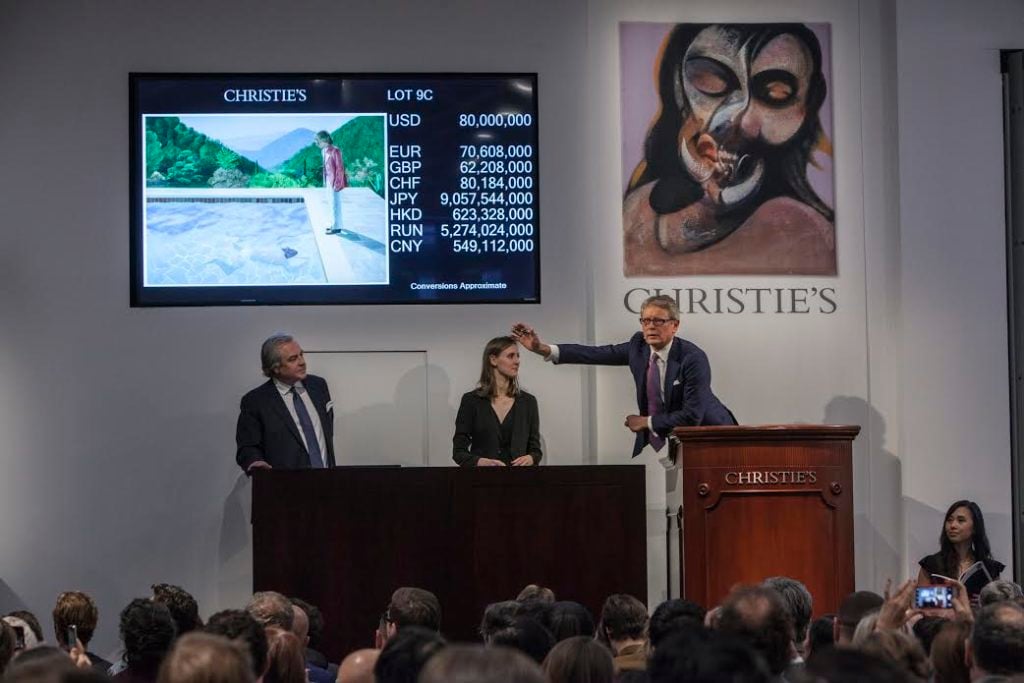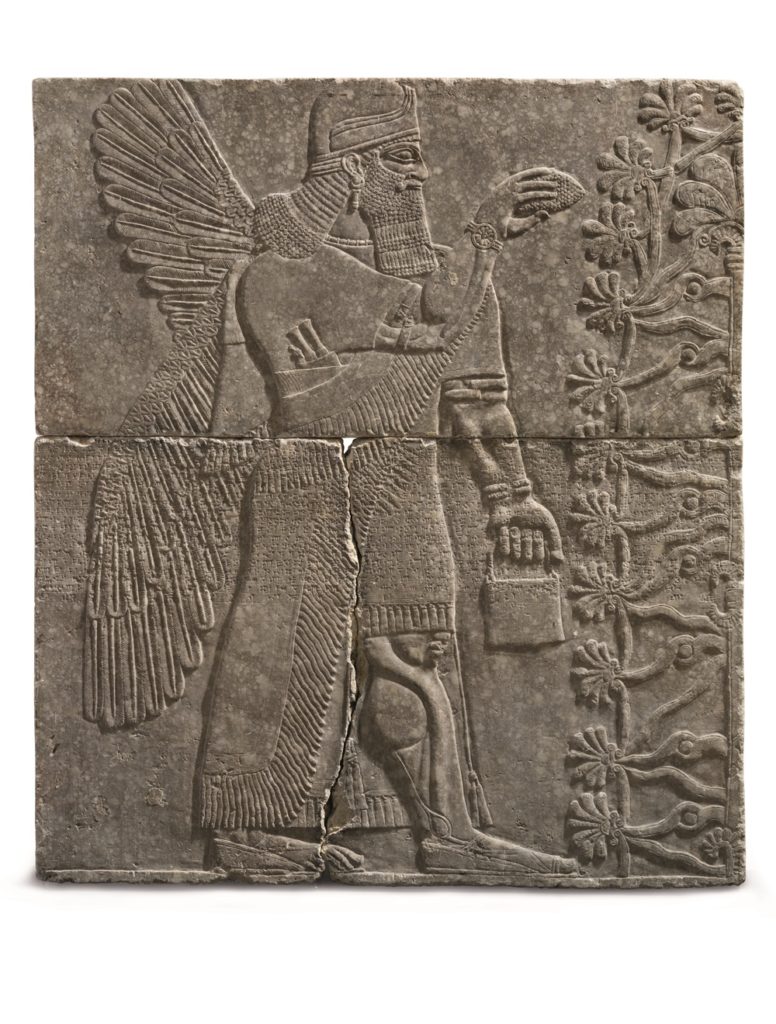Auctions
Boosted by High-Value Estates and a Bump in Online Sales, Christie’s Announces $7 Billion in Revenue for 2018
Blue-chip estates and online clients boosted the bottom line at Christie's—but the total is still down from the US market's peak.

Blue-chip estates and online clients boosted the bottom line at Christie's—but the total is still down from the US market's peak.

Eileen Kinsella

Boosted by top-flight estates and digital initiatives, Christie’s has announced that 2018 was among its best years to date. The auction house reported total sales—including private sales—of $7 billion last year, up six percent from 2017. Still, the figure lagged behind the sky-high numbers posted during the art market’s most recent boom in 2014 ($8.4 billion) and 2015 ($7.4 billion). Currency fluctuations aside, Christie’s points out that, in terms of pounds, this year’s £5.3 billion total is the highest annual global total ever.
The privately owned auction house reported $6.3 billion in total auction sales and $653.3 million in private transactions in 2018.
Online-only sales were a notable growth area for Christie’s, having pulled in $87 million, 16 percent more than in 2017. The house also reported that online sales were the most effective portal for new buyers (the next two were luxury sales and postwar and contemporary art). All told, 32 percent of all buyers were new to the auction house.
But above all, Christie’s revenue benefited less from digital outreach than from a number of extremely lucrative estates. Last year, Christie’s sold the collection of the late Peggy and David Rockefeller, which generated a total of $832.6 million, and the collection of the late travel magnate Barney Ebsworth, which made $323.1 million. Combined, they accounted for more than 16 percent of Christie’s total reported sales.
Notably, both estates carried a financial guarantee, so they were essentially pre-sold ahead of time. The terms of the deals remain undisclosed, and auction houses are known to offer competitive deals to secure the most prestigious estates, so the true profit Christie’s made from the collections remains unknown.

David Hockney, Portrait of an Artist (Pool with Two Figures) (1972). Courtesy of Christie’s Images Ltd.
Among the highest-priced individual objects sold in 2018 were Edward Hopper’s Chop Suey (1929), one of the last major Hoppers from the 1920s in private hands, which sold for $91.9 million. (The work, from Ebsworth’s collection, was at one point promised to the Seattle Art Museum, but the collector ultimately left the work to his family, who sold it.)
Another highlight of the year was the sale of David Hockney’s classic poolside scene, Portrait of an Artist (Pool with Two Figures) (1972), which sold the day after the Hopper for $90.3 million. The price makes Hockney the most expensive living artist at auction, unseating Jeff Koons.
Another record, achieved outside the modern and contemporary sector, was the price of just under $31 million paid in October for gypsum relief of a Winged Genius (circa 883–859 BC) that was made for the palace of Ashurnasirpal II, marking the second-highest price ever paid for a work of ancient art.
While noting these record-breaking performances, Christie’s CEO Guillaume Cerutti was circumspect. He acknowledged that “challenging macro-political and economic environmental” signals had increased toward the end of last year, moderating expectations for the months to come. Nevertheless, “we remain confident of continued success in 2019, thanks to judicious planning and continued focus on curation selection and pricing,” he said.
Christie’s, which is privately owned, is not required to make strict financial disclosures that would provide insight into profitability beyond their overall revenues and sales. Sotheby’s, which is publicly traded on the New York Stock Exchange, will release its fourth-quarter and full-year earnings report at the end of this month. At the end of 2018, Sotheby’s posted preliminary global auction sales of $5.3 billion and private sales of $675 million for the first nine months of the year.

An Assyrian gypsum relief of a winged genius, Reign of Ashurnasirpal (circa 883-859 B.C.). Image courtesy of Christie’s.
Christie’s said sales in Asia, always a closely watched region for growth and development, totaled $815.4 million, a five percent increase over 2017. The result is perhaps a pleasant surprise considering China’s sluggish economic growth last year. According to artnet Analytics’s own figures, auction sales in China declined by 16.2 percent in 2018.
But Christie’s appears committed to cultivating collectors throughout Asia, not just in China. “We now conduct tours, lectures, international exhibitions and client events in Hong Kong, Seoul, Taipei, Singapore, Jakarta, Bangkok, Tokyo and Malaysia as well as Shanghai, Beijing, Nanjing and Guangzhou,” Jennifer Zatorski, Christie’s president of North and South America, told artnet News in a statement.
From their figures, it’s clear to see why: Asian client spending accounted for 25 percent of total global sales (including in New York and London). Further, more than half (57 percent) of spending by the Asian client base was for work outside of the Asian art sales category. All told, 23 percent of Christie’s new buyers were from Asia.
On the other hand, sales fell eight percent, to $1.8 billion, in Europe and the Middle East, two regions experiencing both political and economic upheaval.